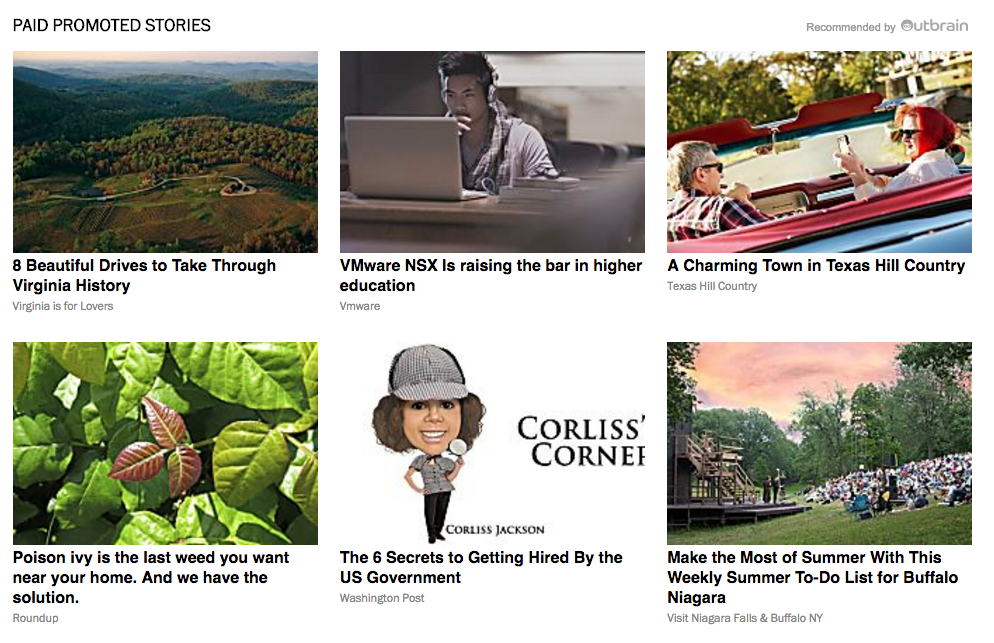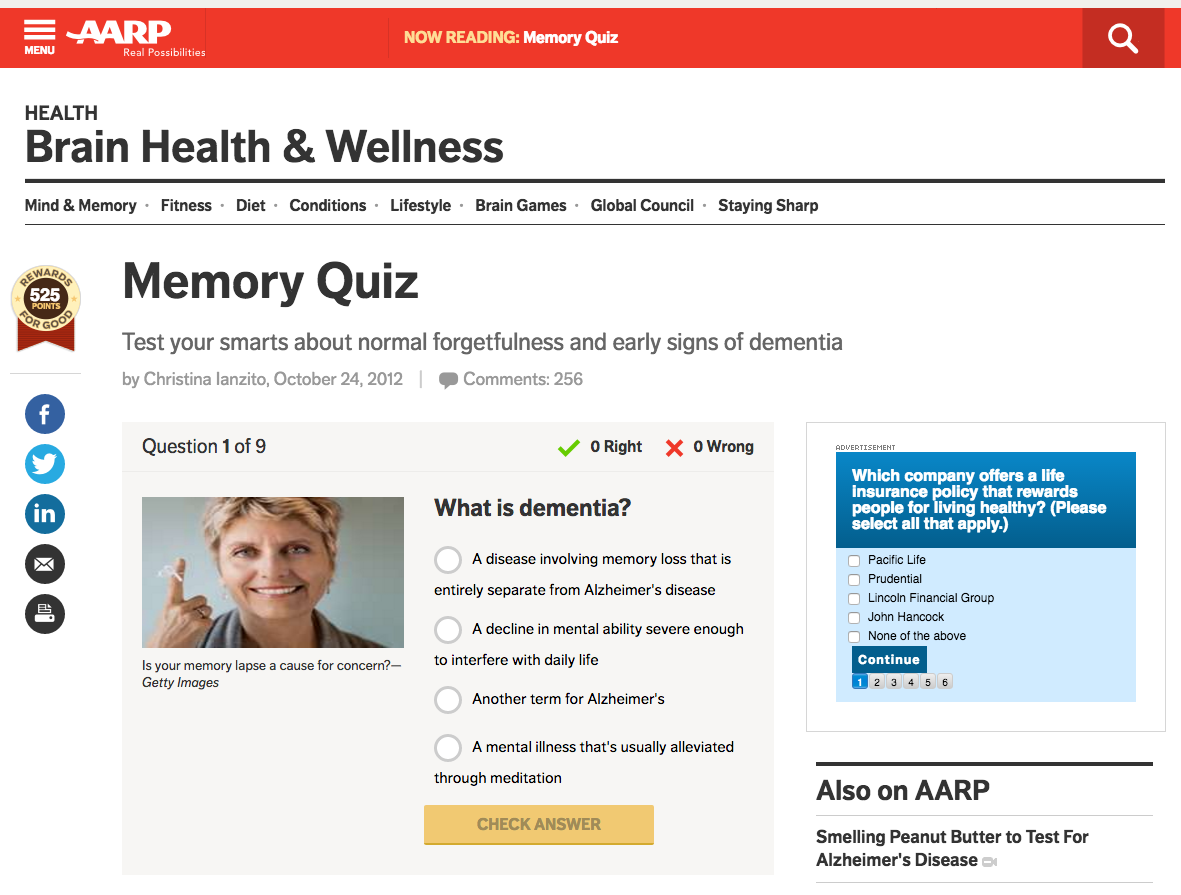
Sourced Traffic: One Weird Trick That Isn’t Always a Great Idea
Is your association using sourced traffic to draw attention to itself? (Do you even know? As it turns out, not a lot of folks do.) While the strategy has value in some contexts, one association argues that the marketing approach has a lot of inherent problems that are important to understand before you pull the trigger.
What do these links at The Atlantic, TechCrunch, New York Magazine, The Daily Beast, and The Washington Post have in common?
OK, guess …
(I’ll give you a hint: It has nothing to do with the content on any of the pages, and the connective tissue can be found at the bottom of the page, not the top.)
… (waiting) …
… Ready to give up? OK, here’s your answer: Each of these sites (along with many others online) rely on a form of sponsored advertising that has taken over the internet in the past few years—the paid placement of links to content, often of varying quality, on websites that a lot of people read.
These links, distributed by companies like Outbrain and Taboola, are a great way to get traffic from prominent websites around the internet—especially those with a general audience. That means they often get used by associations with wide membership bases, like the National Federation of Independent Businesses (NFIB) and AARP.
These links represent perhaps the most prominent form of “sourced traffic,” a way to help marketing firms hit key traffic goals that might be impossible to touch organically. Those links get seen by a lot of folks with eyeballs on a daily basis, even if their neighbors are of the “one weird trick to lose weight” variety.
And the ads are helping push their parent networks to new heights. Last week, Taboola was drawing headlines after revealing evidence that its “read more” links were read by a billion people every single month—something it characterized as second only to Facebook.
“All brands, publishers, and marketers have stories that need to be discovered and rediscovered, and I’m excited about the scale we can now offer to top brands around the world,” Adam Singolda, Taboola’s founder and CEO, said in a news release.
Not to be outdone, major competitor Outbrain just raised $45 million in fresh capital earlier this month.

What’s Wrong With Sourced Traffic?
Clearly, the market segment is pretty significant, and who doesn’t want to show up on The New York Times every once in a while?
Problem is, the quality of those clicks isn’t nearly what it could could be, according to one industry group. A new report by the Association of National Advertisers underlines the risks behind sourced traffic for marketers—and they come down to the usual suspect in the programmatic advertising space: Fraud.
“Sourced traffic can be beneficial to an advertiser by providing efficient impressions to fulfill the requirements of a media buy,” the ANA report states. “Yet there are issues that advertisers need to be aware of, including lack of transparency and high levels of bot fraud.”
Among the issues that the association says permeate the sourced traffic strategy:
Advertisers don’t really understand the approach. The sourced-traffic process is something nearly two-thirds of advertisers (61 percent) say they have a limited understanding of, at best. And more than half (54 percent) admit they’re not even sure if a given ad campaign is using sourced traffic. “We find this lack of familiarity and transparency disturbing,” the study stated.
The quality of the traffic isn’t as good. If your organization gets a hit on an ad campaign from an organic search result, the odds are pretty good that the person coming to your page actually wanted to go there. With sourced traffic, however, they’re often landing on the page because a headline or image caught their eye—they weren’t looking for it, in other words. And as a result this content doesn’t connect nearly as effectively. “Since the sourced traffic audience is a step or more removed from a publisher’s organic audience, the quality of such traffic could be inferior,” the report states.
Bot traffic is prevalent. A couple of years ago, the Interactive Advertising Bureau sounded the alarm about click fraud, and ANA followed suit with research of its own released earlier this year. In its latest report, ANA says that bot traffic is extremely prevalent when it comes to sourced traffic. “With sourced traffic, you just don’t know what you’re getting,” one ad exec said to ANA researchers, according to the report.
ANA President and CEO Bob Liodice put the ball in the marketing agencies’ court.
“Sourced traffic needs to be monitored carefully, and marketers must be increasingly diligent about their digital media buys,” Liodice said in a news release. “Media agencies must educate clients, safeguard client investments, and challenge media companies to be much more transparent.”
Think in Terms of ROI
Clearly, ANA’s report is skewed pretty strongly against the market segment, despite its prominence in recent years. Part of the reason is understandable: A visit from a random paid link in an unrelated article is a harder sell than one from your own organic reach.
But there is potential to make it work: You just have to be aware of the weaknesses in the Outbrains of the world and target your content accordingly. Your content strategy for these shouldn’t be deep-linked stuff that’s in the weeds of minutiae. Instead, it should aim broad, aim at an introduction, and aim to keep people looking for more than a few seconds.

This recent post on Outbrain’s blog highlights the fact that many active Outbrain clients are hitting with content strategies like quizzes and interactive games. (This AARP quiz shows up as an example in the post.) These approaches are clearly designed to build a return on investment—three words that can’t be lost at any point in this process.
And ultimately, a firm like Outbrain or Tabloola is just as much a vendor as the company that manages your web server or programs your association management system. If you’re going to use them, you should expect transparency, and you should have standards on how you use their services, if at all. As ANA’s report puts it:
Advertisers should consider having formal, written guidelines on sourced traffic that are shared with agencies and all media companies soliciting their business. Such guidelines could set rules about what good/bad practices of publishers are and could even prohibit sourced traffic or limit it under certain circumstances.
Now, these companies have figured out a way to make it possible to get a lot of traffic from some of the internet’s most prominent websites. But not all traffic is created equal, and paid traffic that doesn’t solve a business problem is a waste of money.
All those silver arrows are for naught if you keep missing the target.






Comments